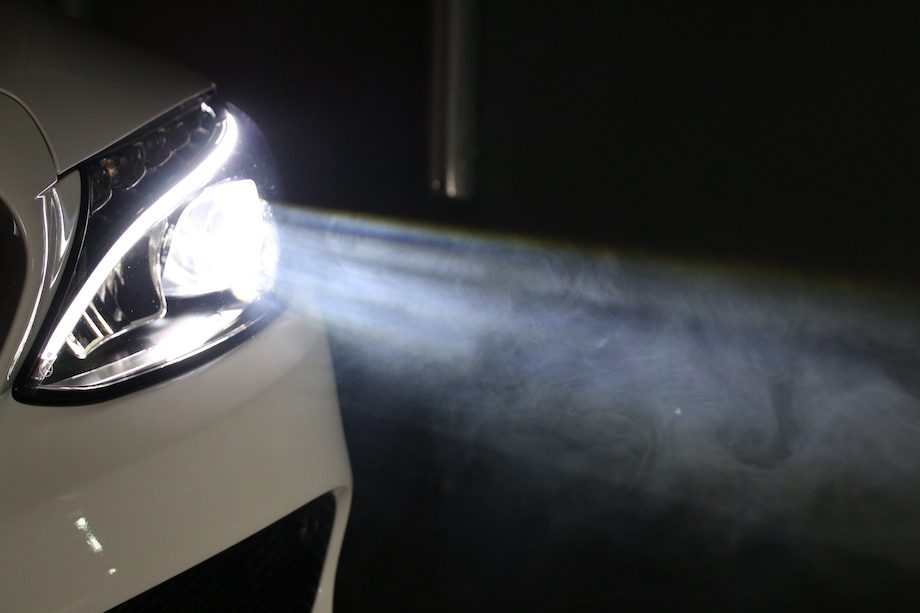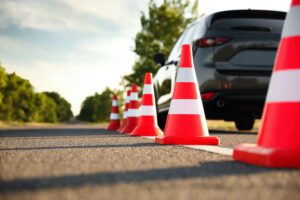Dipped Headlight vs. Main Beam – Which to Use in the Dark

When you’re driving at night, which headlights should you use?
Obviously not your fog lights. You should only use these when visibility’s particularly low.
So really, it’s a question of dipped headlights vs. main beams. Which ones should you use, and when?
Dipped Headlight vs. Main Beam
Your dipped headlights are your general all-purpose night time driving headlights. They’re bright enough to light your way, and to make you visible to other road users, including drivers, cyclists, and pedestrians. But because these lights are dipped, unlike your main beam, they’re less likely to dazzle other road users.
In most circumstances, you should stick to using your dipped headlights at night. Most modern cars have automatic headlight settings. If you’re unsure as to when you should turn your headlights on, use this setting, and your car will switch your lights on automatically when it gets dark enough.
When Should I Use Full Beam Headlights?
You should only use your full beam headlights when it’s very dark, when the road is unlit and, crucially, when there are no other road users around.
Full beam headlights are a lot brighter than dipped headlights. They’re also angled higher. So rather than illuminating the road immediately before your car, they’ll instead shine a bright light on a large area in front of you.
Full beam headlights let you see further and wider than dipped headlights, so in some situations they’ll let you anticipate hazards much sooner than you would with dipped headlights.
When Not to Use Your Full Beam Headlights
Picture the scene: You’re driving down a dark, winding country road, late at night. Your dipped headlights aren’t bright enough to light your way, so you switch to your full beam headlights instead.
In this situation, your full beam headlights will make your life a lot easier. But here’s when you should switch back to dipped headlights:
When you see any other motorists approaching. The moment you see their headlights, no matter how far away they are, dip your headlights, to avoid dazzling the other driver.
When you’re following another motorist. If there’s another driver in front of you, dip your headlights, otherwise your full beam headlights could show up in their rear-view mirrors, which again will dazzle them.
When you’re overtaking. If you want to overtake another driver keep using you dipped headlights until you have finished overtaking. You can then turn your full beam on if you need to.
When you’re approaching corners or hills. You never know, there might be another car just over the hill or just around the corner.
Using Full Beams In Foggy Conditions
There’s one situation where it’s always a bad idea to use your full beams: When it’s foggy. As full beams illuminate a wide area immediately in front of you, they can actually make visibility even worse in foggy conditions.
So when it’s foggy, use your fog lights.
What About Flashing Your Full Beams?
Some drivers flash their full beam headlights to send a message to other drivers. They might flash their headlights to thank another driver for letting them pass, or to let drivers waiting at junctions know that they can pull out. But did you know that there are strict rules on when you should and shouldn’t flash other drivers.
It’s worth familiarising yourself with the law, and the risks. So read our full guide to flashing your headlights here.
Other Guides to Driving at Night and Using Your Headlights
You’ll find multiple resources on our site to help you better understand when to use your headlights, and how to take care of them:
The main thing to remember – it’s illegal to drive without lights at night so keep them in working order.
This is why regular car servicing is vital.
Regular servicing keeps things running smoothly, like your lights. So it’s no exaggeration to say that car servicing can help towards preventing road accidents.
If you’re less likely to be involved in an accident, you’re less likely to make a claim on your car insurance. So you can build up a no claims bonus which will help you save money on the cost of cover in the long-term.
At Go Girl, we specialise in insurance for new drivers to give you the cover you need at a price you can afford.






